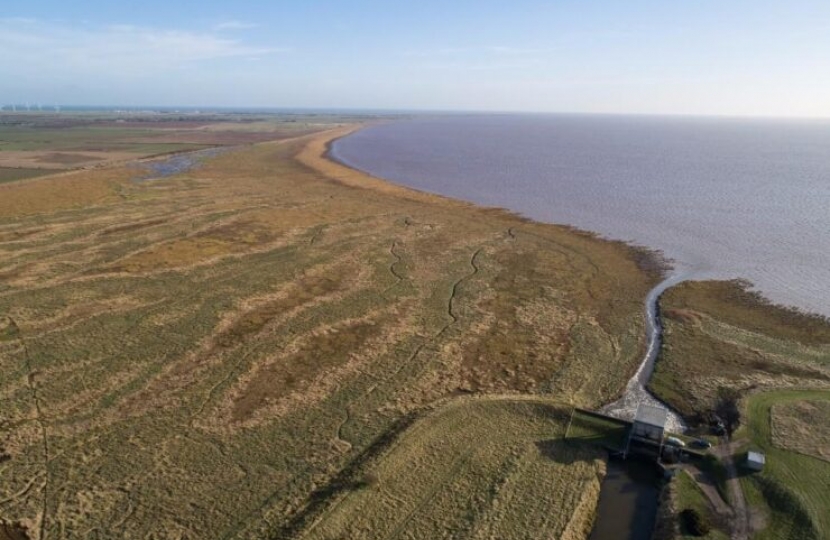
Graham Stuart, MP for Beverley and Holderness, has welcomed an initial £100,000 Government investment that will kickstart a project that it’s hoped will unlock £1 billion investment into restoring coastal wetlands across England.
Led by the UK Centre for Ecology & Hydrology, with support from other organisations including the Environment Agency, the Wildfowl & Wetlands Trust and RSPB, the funding from the first round of the £10 million-strong Natural Environment Investment Readiness Fund will create a new ‘UK Saltmarsh Carbon Code’ that will stimulate the restoration of 22,000ha of important saltmarsh habitat across the country.
One of the first projects that will be used to inform the new code is being carried out on the saltmarshes at Skeffling on the north bank of the Humber. Restoration usually involves creating a gap in current sea walls in order to reflood saltmarshes and reconnect them to the tidal flow of the estuary. It can also involve landscaping measures to help tidal waters flow in and out and constructing replacement sea defences inland.
Saltmarshes are important as in their natural state they can trap carbon at a greater rate than inland habitats like forests or peatlands. Restoring saltmarsh habitat would be equivalent to cutting around 4 tonnes of CO2 emissions per hectare each year. With all 22,000ha of saltmarshes restored, this would equate to 88,000 tonnes of carbon being taken out of the atmosphere every single year.
As well as cutting emissions, saltmarshes can also support local wildlife and reduce flood risk. They provide important habitats for wintering migratory birds as well as commercially important fish species like seabass. Saltmarshes act as natural buffer zones, reducing wave height and energy before they can reach properties, roads, and buildings. With the cost of constructing and maintaining sea defences continuing to rise there has been increased interest in natural methods to reduce flood risk, with work being carried out on this at the University of Hull’s Flood Innovation Centre.
Despite their benefits, large areas of saltmarsh have been drained from the 1800s onwards in order to reclaim land from the sea for agriculture, development or coastal flood defences, resulting in loss of habitat and biodiversity.
Graham commented, “I’m really pleased that Skeffling will benefit from this new funding and that research from it will help to develop the Saltmarsh Carbon Code. So, ultimately, the work at Skeffling could pave the way for 22,000ha of vital saltmarsh to be restored over the next 25 years.
“As we work towards meeting net-zero by 2050, we’ll need a combination of technological innovation as well as making the most of nature-based solutions; trapping carbon in saltmarshes instead of it lingering in the atmosphere where it contributes to global warming.”
Environment Minister Rebecca Pow, who announced the funding, added: “To tackle the environmental challenges we face from climate change and biodiversity loss, it’s crucial that domestic natural environment projects are able to attract private investment alongside support from the public sector.
“Unleashing innovation and growing new sources of finance, such as through the Natural Environment Investment Readiness Fund, are fundamental for delivering nature recovery and developing nature-based solutions to achieve net-zero carbon emissions by 2050.”

